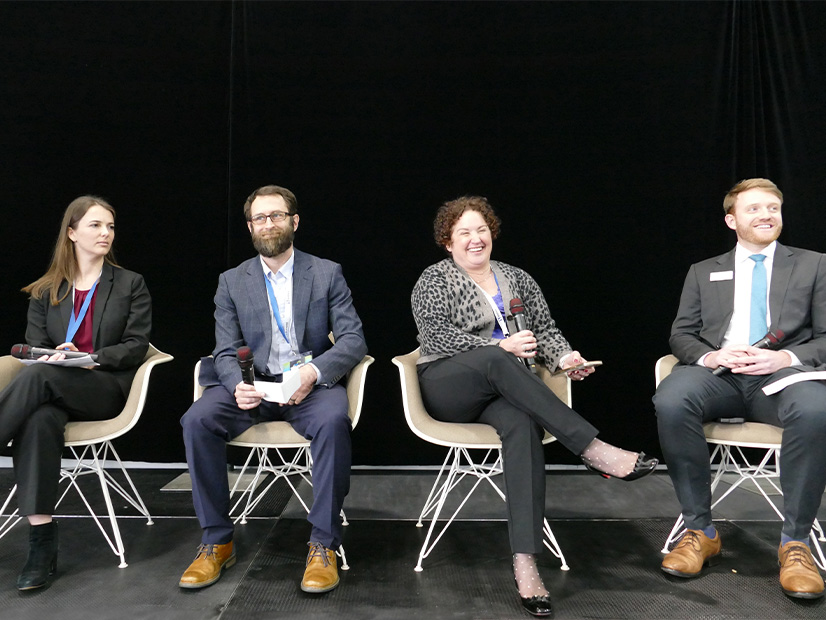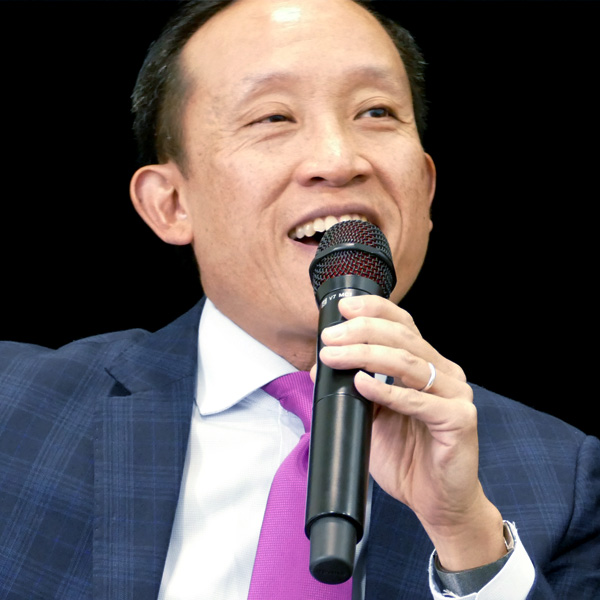
SACRAMENTO, Calif. — Construction of the floating offshore wind projects envisioned for the West Coast will require a much more robust supply chain and system of ports, according to industry officials speaking at Oceantic Network’s Floating Offshore Wind Port and Vessel Summit on Feb. 22.
Events of the past year have illuminated the challenges to developing offshore wind (OSW) projects in the U.S., including the need for a stronger supply chain, a greater network of ports and a timelier source of funding from both the public and private sectors. (See Offshore Wind Reset Complete in New York.)
U.S. demand for OSW is growing. Oceantic’s 2024 U.S. Offshore Wind Market Report projects that states will have secured contracts for 20 to 25 GW of OSW generation by 2025, growing from 17.6 GW in 2023. And Oceantic CEO Liz Burdock said states could award as much as 15.5 GW of new capacity by December.
But offshore wind developers, port officials and vessel builders will have to address some of the big challenges in building a cost-effective market for offshore wind to meet those goals.
“Obviously, last year, 2023, we experienced some challenges, but we have really risen to meet those challenges. … And I say we collectively, the states and the industry, have come together to create better, smarter, stronger markets for decades to come,” Burdock said.
Inflation and tightening supply chains in 2023 led to the cancellation of offshore wind projects; developers terminated 51% of power contracts in place prior to 2023, including the Empire Wind II, Skipjack and Beacon Wind projects on the East Coast, the report says.
Offtake agreement cancellations substantially impacted supply chain development, causing project delays that left the nation’s 30 GW of clean power by 2030 out of reach.
“With manufacturing investments largely tied to singular projects, the reorganization of the power offtake market nearly froze the development of the supply chain, simultaneously facing skyrocketing inflation and material supply costs,” the report reads. “Factories announced as part of procurements in 2020 and 2021 largely remain in the planning stage. And while there were significant announcements, including a $1 billion investment in a new blade and nacelle facility in New York, on the aggregate, new supply chain investments for manufacturing, ports and vessels slowed modestly in 2023.”
Industry officials at the summit largely grappled with how to address the supply chain issues and develop the ports and vessels needed to advance the state’s expected demand for FOSW.
Supply Chain Issues
John Begala, Oceantic vice president for federal and state policy, highlighted the need for a robust national supply chain.
“What the East Coast has taught us, especially with the cancellation of projects, is that over-reliance on a global supply chain is going to be a challenge,” Begala said during a panel discussion.
“We are not the only country pushing for offshore wind. What I think we need to think about to be successful on the West Coast is to ensure that we create a national and — don’t yell at me — not purely localized multifaceted backbone to support our offshore wind industry. We definitely need to support local interests, but this should be a national effort.”
But Darren McQuillan, who works in global business development at Bardex, which builds ship lifts and mooring technologies, said the supply chain should move to support 100% “local content” built from the bottom up.
McQuillan also noted that lack of standardization coupled with the sheer number of different technologies for offshore wind platforms — around 85, he said — has stalled supply chain development.
Greater standardization requires the identification of common components for offshore wind technologies. While there are three different types of floating platforms — spar buoy, semisubmersible and the tensioned-legs platform (TLP) — they can be developed with the same common components, such as columns and trusses. But the market is “nowhere near standardization,” he said.
“If we’re ever going to make the targets that we want to make by 2030, 2045, we can’t let technology wag the dog,” he said. “As long as technology is wagging the dog, supply chain ends up being a bespoke execution model, and if supply chain locally ends up being a bespoke execution model, of course it’s going to be expensive because they have to constantly retool and change to meet the technology requirement. What that does is it forces the work overseas,” he said.
Begala announced a new Oceantic initiative, the West Coast Supplier Council, which will bring together companies on the front lines of the supply chain, such as equipment manufacturers and construction firms.
“These businesses will serve as the backbone for delivering on that supply chain and create the workforce for offshore wind development,” he said.
Ports and Vessels
An “ecosystem of ports” needs to be developed to support the installation and implementation of floating offshore wind, including staging and integration ports and those that support large vessels, said Michael Magri Overend, senior project manager for Atlas Wind, Equinor’s California FOSW project.
And Jack Haynie, offshore wind and renewables lead at Baird, said the company thinks nearly 100 ports should be built to support the amount of infrastructure needed for the U.S. offshore wind industry, and they’re concerned about where the funding will come from and how quickly.
The Port of Long Beach is leading the way in preparing for offshore wind development. In May, port officials released plans to develop Pier Wind to support the manufacture and assembly of offshore wind turbines; it would be the largest facility at any U.S. seaport specifically designed for these efforts. But planners are asking for financial help from the federal government to support such an ambitious facility.
“We will absolutely bring a significant amount of capital contribution to the development, probably larger than any other port in the nation has done, but in relative value to pure wind cost, it’s not enough,” said Suzanne Plezia, chief harbor engineer at the port.
Plezia is seeking ways to make offshore wind projects “bankable” to avoid the volatile financial patterns of the past.
“How do we de-risk these projects?” she said. “There are smart ways to use public dollars, maybe not just as subsidies, but as a de-risking mechanism, whether it’s a loss reserve or some sort of first-loss position or basic synthetic insurance policy where if you build it and for reasons that are outside of your control demand doesn’t come, then somebody can help absorb that variability.”
Panelists also identified the need for larger vessels that can transport components offshore, which presents another need for significant funding.
No More Hypotheticals
During his time as a California assemblymember, San Francisco City Attorney David Chiu authored AB 525, the bill directing the California Energy Commission to study floating offshore wind. Despite the challenges facing the industry, Chiu emphasized the importance of FOSW, highlighting that the state could generate enough energy to power its entire grid with resources located just 20 to 30 miles off the coast.
“Of the 200 or so laws that I have authored in California and in my city of San Francisco, AB 525 from my perspective might be the most impactful thing I was honored to be a part of,” he said. “Every aspect of the state of California should be a part of this.”
And while 2023 was both productive and tumultuous for wind energy, Burdock is confident the market is transforming to support actual implementation of FOSW.
“We’re moving from concepts and pilot projects to commercial development,” she said. “Gone are the days of hypotheticals.”


